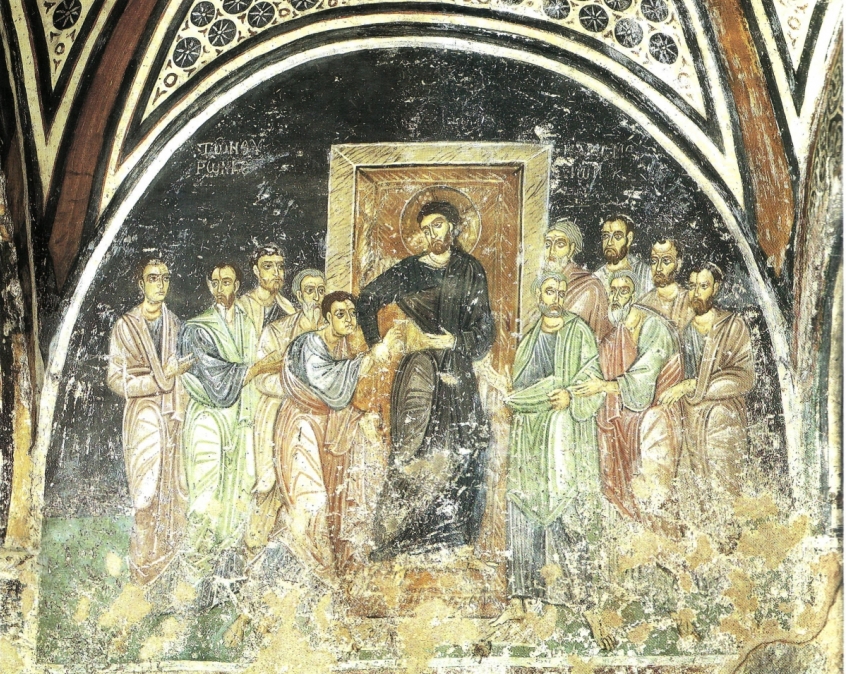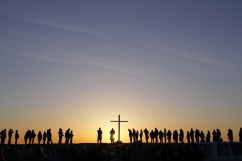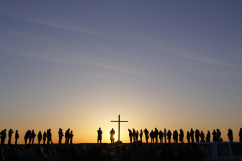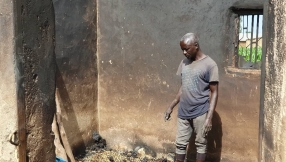Jesus was born, he died and rose again, before ascending into heaven. These truths are foundational to our Christian faith. We know the familiar stories of the Triumphal Entry, the Last Supper and the crucifixion, but what happened between the resurrection and ascension?

The passion narrative is well known and often accounted both in art and in the Church, but the details of the 40 days between Jesus' resurrection and ascension are far less well known.
While Matthew and Mark's post-resurrection accounts are compartively shorter than Luke and John's, all four Gospels share details that enlighten us on Jesus' life after death.
The Gospels speak of 10 apparitions of the risen Jesus, five of which occur on the day of his resurrection, and five further times before he ascended into heaven. We know from Acts 1 that he was on earth for 40 days, and that he spent these days with his disciples:
"After his suffering, he (Jesus) presented himself to them and gave many convincing proofs of that he was alive. He appeared to them over a period of forty days and spoke about the kingdom of God." (Acts 1:3)
OK, so what did he actually do?
Appeared to women
Jesus revealed himself to Mary Magdalene before any other person. Having just seen Jesus' empty tomb, she remained in the garden weeping, when Jesus appeared to her. She mistook him to be the gardener, but when he called her by name, Mary recognised his voice.
The idea that a woman would be a valid witness may seem plausible in 21st Century western society, but it was unheard of in 1st Century Palestine. The testimony of women was not given the same weight as that of a man, either personally or in a court of law. That Jesus chose to reveal himself to Mary first was revolutionary. He then sent her to "go and tell" the other disciples. He trusted her to tell his followers of his return.
His second appearance was to the group of women who had been with Mary in the graveyard. On their way from having seen the apostles, Jesus appeared to them, and "they came up and took hold of his feet and worshipped him." (Matthew 28:9)
Appeared to his disciples
Later that day, on the road to Emmaus, Jesus appeared to two disciples – one called Cleopas – but they were slow to realise that the man beside them was the risen Messiah. It was not until he broke bread with them, after they had described to him the events of the passion, that "their eyes were opened and they recognised him" (Luke 24.31).
It was not until they recognised him that Jesus left. He did not abandon his disciples when they did not see it was him, but remained with them until they realised that their hearts had been "burning within us while he talked with us".
Similarly, during his next appearance shortly afterwards, Jesus was not perturbed by his disciples mistaking him for a ghost. Instead, he reassured them: "Look at my hands and my feet. It is I myself! Touch me and see; a ghost does not have flesh and bones, as you see I have." (Luke 24:39)
His life after the resurrection was not the result of sinister spirituality, but of Biblical prophecy. He drew his disciples away from supernatural speculation towards the Biblical foundations of his resurrected body:
"This is what I told you while I was still with you: Everything must be fulfilled that is written about me in the Law of Moses, the Prophets and the Psalms" (Luke 24.44).
Appeared to Thomas
We all know the narrative of 'doubting Thomas'. He had not been with the disciples when Jesus revealed himself, and did not believe the disciples testimony, saying: "Unless I see the nail marks in his hands and put my finger where the nails were, and put my hand into his side, I will not believe." (John 20:25)
In this encounter we see both the compassion and the challenge that Jesus brings. Rather than leaving Thomas without faith, Jesus "came and stood among them" – offering peace in order that he might believe, saying: "Stop doubting and believe." (John 20:27)
Redeemed and reinstated Peter
The Gospel of John then tells the story of Jesus' last recorded miracle, when he overwhelmed his disciples' fishing nets with a huge catch of fish. He then speaks privately with Peter. Just as Peter had denied Jesus three times, Jesus asks him three times: "do you love me?" It is here that Peter is restored, having denied his master in his hour of need, and is called to "feed my sheep" and "follow me". (John 21: 17, 19)
Jesus' faithfulness is greater than ours. Jesus saw Peter's weakness, yet he also saw his love for him, and chose to stand by him. Though he saw Peter's limitations, he did not define him by them.
The Great Commission
Matthew and Mark both close with the "Great Commission" – Jesus' instruction to his disciples to go out into the world and spread the good news of salvation.
"All authority in heaven and on earth has been given to me. Therefore go and make disciples of all nations, baptising them in the name of the Father and of the Son and of the Holy Spirit, and teaching them to obey everything I have commanded you. And surely I am with you always, to the very end of the age." (Matthew 28:18-20)
It is after this command, on which much of the Christian emphasis on sharing the gospel is based, that Jesus is "taken up into heaven".
Jesus' ministry did not end with his death, but continued through his resurrection and into the days before his ascension into heaven. In this time, he revealed and reaffirmed crucial elements both of his character and his commission.
















